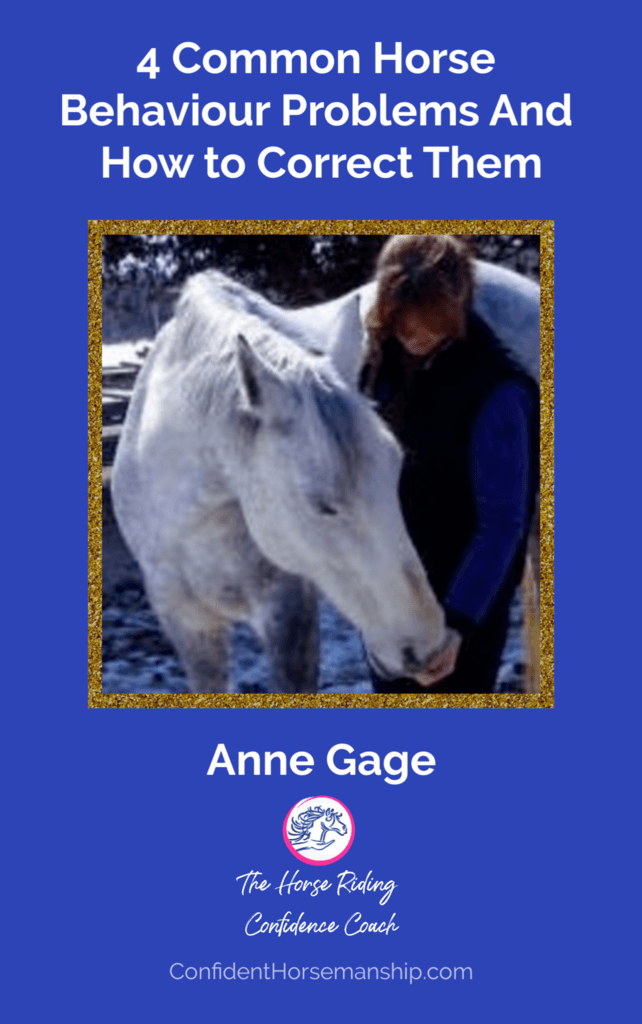Seen on Facebook: “Anybody know of a good bit to use on a horse that runs through commands and fights the bit? I need to try a new bit because the horse I’m riding has a hard mouth.”
When your horse runs through or fights the bit, it’s called evasion. Common bit evasions include:
- Chomping, opening or crossing his mouth
- Running away
- Leaning on the bit
- Shaking, throwing or tossing his head
- Going behind the bit (nose to his chest.)
- Going above the bit (nose straight up)
- Tongue hanging out
Unfortunately, moving up to a stronger bit or adding a gadget (eg. draw reins) is a common solution. While it may work in the short term, it doesn’t address the real source of the problem.
If you want to eliminate the problem and build a better, more trusting and willing partnership with your horse read on.
Following are 3 causes of bit evasions and how to correct them.
Cause #1 – Dental Problems & Poor Bit Fit
Horses run from pain. Sharp teeth, ulcers inside his mouth or an injury to his tongue will be aggravated by the bit – even in gentle hands.
The Correction – Have your vet or equine dentist check for sharp or broken teeth, ulcers and even damage to his tongue. Just like you, your horse should have his teeth checked by a professional at least annually and in some cases every 6 months.
Cause #2 – Poor Bit Fit
If the bit is too wide or sits too low in the mouth, it will move around too much. If it’s too narrow or sits too high, it will pinch and damage the skin and bars in the mouth. Bits also cause pain if they are too fat, too thin or don’t leave enough room for the tongue or push up into the palate.
The Correction – Check the size of the bit and how it fits the shape of your horse’s mouth. It should not stick out on either side of the mouth or pinch the corners of his lips. It should be about ¼” wider than the measurement from lip to lip (corner to corner). Find the style of bit that works with the shape and size of your horse’s mouth having enough room for the tongue, not pressing on the palate and fitting easily between the bars.
When fitted correctly, the bit sits quietly across the bars without pulling up the lips or moving up and down. Remember “a wrinkle not a smile“. For most horses, this means at least one but no more than two wrinkles in the corners of the lips However, for some horses there may be no wrinkle at all. Adjust as necessary to ensure the bit fits comfortably without sliding up and down loosely.
Cause #3 – Busy or Unsteady Hands
Hands that are busy, unsteady, tense, see-saw, pull or constantly bump the horse’s mouth cause pain and discomfort. They are also the sign of a tense and unbalanced rider.
The Correction – Develop an independent seat. You should never use the reins for support, balance or the primary means for controlling your horse. Your hands must work independently from your seat so that you can influence your horse without creating tension or resistance. You will be balanced, able to follow and work with your horses movement – applying your aids at the right time, with the least amount of pressure and without tension.
For your horse to be able to perform at his best and be a confident, trusting and willing partner, he needs to be pain free, balanced and relaxed. You can help him develop this way of going by being a quiet, balanced and relaxed rider.
Click here to read next article – Bucking in the Canter: A Clinic Case Study
There are lots more practical and in depth tips on improving your Confidence and your Partnership with your horse in my book “Confident Rider, Confident Horse: Build Your Confidence While Improving Your Partnership with Your Horse from the Ground to the Saddle”. Click here to order your copy today!
FREE DOWNLOAD
Are You Sometimes Frustrated or Annoyed With Your Horse’s Behaviour (Even Though You Love Him)?
Do You Wish Your Horse Would Stand Quietly While Tied, Being Groomed or Tacked Up?
Are You Tired Of Your Horse Being Distracted and Unfocused When You’re Riding Him?
Download this FREE Guide to Help You And Your Horse Be Calm, Confident and Connected By Learning How To Solve 4 Common Behaviour Problems

Click here to read next article. Click here to return to Article Directory.
